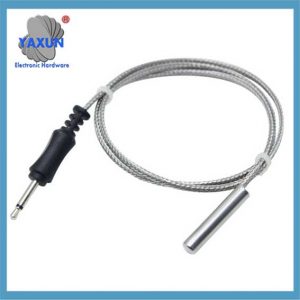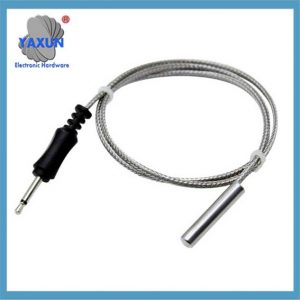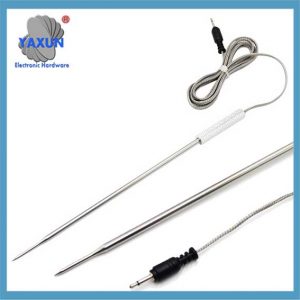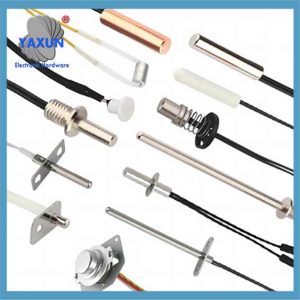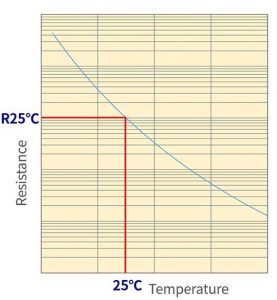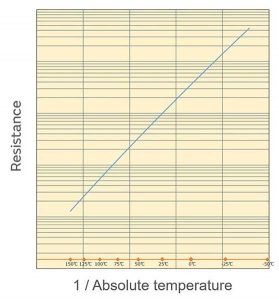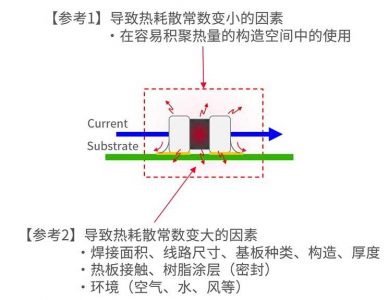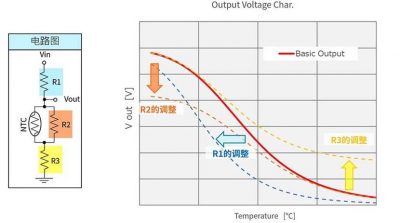產品類別
產品標籤
中國客製化NTC感測器探頭和電纜
就像感測器一樣, 它通常分為: NTC熱敏電阻探頭, PT100探頭, PT1000探頭, DS18B20探頭, 水溫探頭, 汽車感測器探頭, RTD 探頭, 溫控探頭, 溫度調節探頭, 家電感測器探頭, ETC.
傳感器探針和電纜是傳感器的包裝形式, 哪個是傳感器的最基本單元. 傳感器通過合理的電子電路和外部包裝結構包裝. 它具有我們需要的一些獨立的功能組件. 就像感測器一樣, 它通常分為: NTC熱敏電阻探頭, PT100探頭, PT1000探頭, DS18B20探頭, 水溫探頭, 汽車感測器探頭, RTD 探頭, 溫控探頭, 溫度調節探頭, 家電感測器探頭, ETC.
基於溫度預測及其溫度測量方法的NTC探針結構, 探針包括: 多個NTC探針; 銅殼; 金屬支撐結構, 電線和熱導體.
步 1, 在M NTC探針中, 獲得溫度T0, T1, …, 通過每個NTC探針以相等的時間間隔測量的TN, 其中n表示收集的溫度的序列號;
步 2, 計算在相鄰溫度測量時間收集的溫度差VN = TNTN1;
步 3, 計算參數α= VN/VN1;
步 4, 計算預測的溫度TP = TN1+VN/(1一個) 一個探針;
步 5, 計算測得的溫度結核. 本發明可以進一步減少錯誤,並具有良好的一般適用性.
熱敏電阻的完整分析!
🤔你知道什麼是熱敏電阻嗎? 它是電子電路的小專家!
👍熱敏電阻, 簡單地, 是一種敏感元素,可以根據溫度變化調節其電阻值.
🔥正溫度係數熱敏電阻 (正溫度係數), 當溫度升高時, 其阻力值將大大增加. 此功能使其在自動控制電路中發光!
❄️負溫度係數熱敏電阻 (NTC) 相反, 隨著溫度升高時電阻降低. 在家用電器方面, 它通常用於軟啟動, 自動檢測和控制電路.
💡現在您對熱敏電阻有更深入的了解! 在電子世界中, 這是必不可少的角色!
1. NTC簡介
NTC Thermistor是一種以負溫度係數的首字母縮寫命名的熱敏電阻. 通常, 期限 “熱敏電阻” 指的是NTC熱敏電阻. 它是邁克爾·法拉迪(Michael Faraday)發現的, 他當時正在研究硫化銀半導體, 在 1833, 並在1930年代由塞繆爾·魯本(Samuel Reuben)商業化. NTC Thermistor是由錳組成的氧化物半導體陶瓷 (錳), 鎳 (在) 和鈷 (鈷).
可以在我們生活中到處看到. 由於電阻隨溫度升高而降低的特徵, 它不僅用作溫度計和空調中的溫度傳感設備, 或智能手機中的溫度控制設備, 水壺和鐵, 但也用於電源設備中的當前控制. 最近, 隨著車輛電氣化程度的增加, 熱敏電阻越來越多地用於汽車產品.
2. 工作原理
一般來說, 金屬的電阻隨溫度升高而增加. 這是因為熱量加劇了晶格振動, 自由電子的平均移動速度相應降低.
相比之下, 由於熱傳導,半導體中的游離電子和孔的比例增加, 而且該部分大於速度降低的部分的比例, 因此電阻值降低.
另外, 由於頻帶隙存在在半導體中, 當外部加熱時, 價帶中的電子移動到傳導帶並進行電力. 換句話說, 電阻值隨溫度升高而降低.
3. 基本特徵
3.1 電阻 - 溫度特徵 (R-T特徵)
NTC熱敏電阻的電阻值以足夠低的自熱狀態測量 (由於施加電流而產生的熱量). 標準, 建議使用最大操作電流. 和, 電阻值需要與溫度成對錶達.
特徵曲線由以下公式描述:
R0, R1: 溫度T0處的電阻值, T1
T0, T1: 絕對溫度
乙: b常數
數位 1: NTC熱敏電阻的R-T特徵
3.2 b常數
B常數是一個表徵NTC熱電阻的單個值. 調節B常數總是需要兩個點. B常數描述了兩個點的斜率.
如果兩個點不同, B常數也將不同, 因此,在比較時請注意. (參見圖 2)
數位 2: 選擇的不同B常數 2 點
由此, 可以看出,b是LNR vs的斜率. 1/T曲線:
Murata使用25°C和50°C定義B常數, 寫為b (25/50).
如圖 3, 1/時間 (T是絕對溫度) 與電阻值的對數比例. 可以看出,這種關係接近直線.
數位 3: 溫度特性為1/t作為水平軸
3.3 伏安特徵 (V-I特徵)
NTC熱敏電阻的V-I特性如圖所示 4.
數位 4: NTC熱敏電阻的V-I特徵
在低電流的區域, 隨著電流的逐漸增加,歐姆接觸的電壓逐漸增加. 由電流流動引起的自加熱不會導致電阻的溫度通過從熱敏電阻和其他部位的表面散發熱量來升高.
然而, 當熱量發電大, 熱敏電阻本身的溫度上升,電阻值降低. 在這樣的領域, 電流和電壓之間的比例關係不再存在.
一般來說, 熱敏電阻在盡可能低的區域中使用. 標準, 建議將操作電流保持在最大工作電流以下.
如果在超過電壓峰的區域中使用, 可能會發生熱失控反應,例如反復加熱和降低電阻, 導致熱敏電阻變紅或破裂. 請避免在此範圍內使用它.
3.4 電阻溫度係數 (一個)
NTC熱敏電阻的每單位溫度變化速率是溫度係數, 由以下公式計算.
例子: 當溫度接近50°C並且B常數為3380K
a = -3380/(273.15 + 50)²× 100 [%/℃] = -3.2 [%/℃]
所以, 電阻的溫度係數如下.
a = -b/t²× 100 [%/℃]
3.5 熱耗散常數 (d)
當環境溫度為T1時, 當熱敏電阻消耗電力P時 (兆瓦) 它的溫度變化為T2, 以下公式保持.
p = d (T2 -T1)
δ是熱耗散常數 (MW/°C). 上述公式轉換如下.
d = p/ (T2 -T1)
熱耗散常數δ是指在自熱條件下將溫度提高1°C所需的功率.
熱耗散常數δ取決於 “由於消耗而引起的自加熱” 和 “散熱”, 因此,取決於熱敏電阻的操作環境的不同.
穆拉塔定義了 “每單位元件的熱耗散常數”.
3.6 熱時間常數 (t)
當在溫度下維持的熱敏電阻突然更改為環境溫度T1, 更改為目標溫度T1所需的時間稱為熱時間常數 (t). 通常, 此值是指達到的時間 63.2% T0和T1之間的溫度差.
當熱敏電阻保持在一個溫度下 (T0) 暴露於另一個溫度 (T1), 溫度呈指數變化, 和溫度 (時間) 時間過後 (t) 表示如下.
T= (T1 -T0) (1 - exp (-t/t) ) + T0
取t =τ,
T= (T1 -T0) (1-1/e) + T0
(t -t0)/(T1 -T0) = 1 - 1/e = 0.632
這就是為什麼將τ指定為到達的時間 63.2% 溫度差.
數位 6: NTC熱敏電阻的熱時間常數
3.7 最大電壓 (最大電壓)
可以直接應用於熱敏電阻的最大電壓. 當施加電壓超過最大電壓時, 產品性能會惡化甚至破壞.
另外, 組件的溫度由於自熱而升高. 有必要注意組件的溫度不超過工作溫度範圍.
數位 7: NCU15類型的最大電壓降低
3.8 最大工作電流 (IOP), 最大工作電壓 (GTC)
Murata將最大工作電流和最大工作電壓定義為當應用於0.1℃時的電流和電壓. 關於此值, 熱敏電阻可以實現更準確的溫度測量.
所以, 應用超過最大工作電流/電壓的電流/電壓不會導致熱電阻性能降解. 然而, 請注意,組件的自加熱會導致檢測錯誤.
Murata如何計算最大工作電流
計算最大工作電流時, 熱耗散常數 (1MW/°C) 需要由單位組件定義. 熱耗散常數表示散熱的程度, 但是散熱狀態因工作環境而變化很大.
工作環境包括材料, 厚度, 結構, 焊接區域尺寸, 熱板觸點, 樹脂包裝, ETC. 底物. 單位組件定義的使用消除了環境干擾因素.
根據經驗, 實際使用中的熱耗散常數是 3 到 4 乘以單位組件的時間. 假設實際的熱耗散常數為 3.5 次, 最大工作電流顯示在圖中的藍色曲線中. 與1MW/°C的情況相比, 現在 1.9 次 (√3.5次).
3.9 零負載電阻值
電流以電流測量的電阻值 (電壓) 自我加熱可以忽略的地方. 標準, 建議使用最大操作電流.
數位 9: Murata的阻力值測量方法
4. 如何使用
4.1 電路圖
輸出電壓可能會根據NTC熱敏電阻接線圖而有所不同. 您可以在Murata官方網站上的以下URL上模擬它.
Simsurfing: NTC熱敏電阻模擬器 (Murata.co.jp)
數位 10 電阻接地和熱電阻接地電路的輸出特性
4.2 調整R1 (電壓分隔器電阻), R2 (平行電阻), R3 (串聯電阻器)
輸出電壓可能會根據電路圖而有所不同.
數位 11 調整R值和輸出特性的變化
4.3 使用Murata的官方工具計算檢測錯誤
選擇NTC熱電阻的相關參數和電壓分隔電路的相關參數 (參考電壓和電壓分隔電阻器, 阻力準確性), 然後可以正常生成溫度檢測的誤差曲線, 如下圖所示:
數位 12 使用官方工俱生成溫度檢測誤差曲線
聯絡我們
等待您的電子郵件, 我們將在短時間內回覆您 12 小時提供您所需的有價值的信息.
 English
English العربية
العربية Български
Български 粤语
粤语 中文(简体)
中文(简体) 中文(漢字)
中文(漢字) Nederlands
Nederlands Suomi
Suomi Français
Français Deutsch
Deutsch Ελληνικά
Ελληνικά Magyar
Magyar Italiano
Italiano 日本語
日本語 한국어
한국어 Polski
Polski Português
Português Română
Română Русский
Русский Slovenščina
Slovenščina Español
Español Svenska
Svenska ภาษาไทย
ภาษาไทย Türkçe
Türkçe Tiếng Việt
Tiếng Việt







